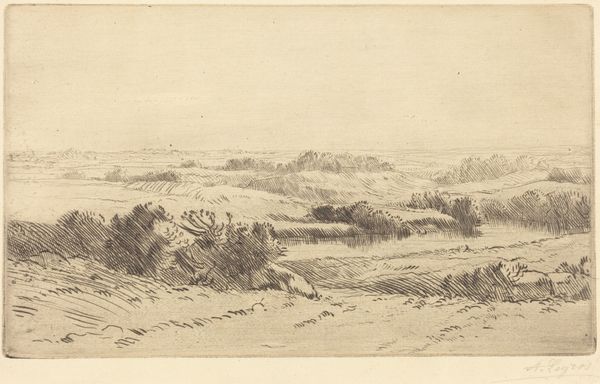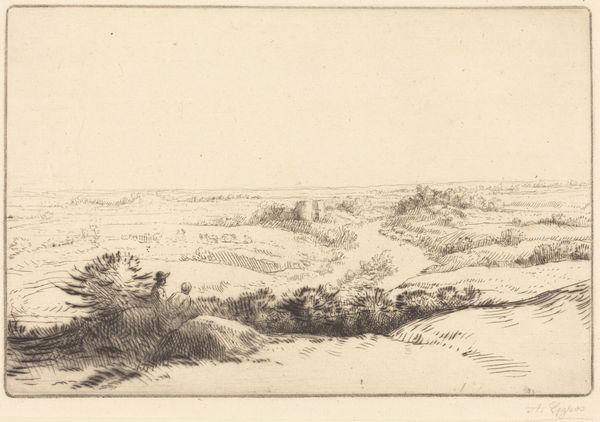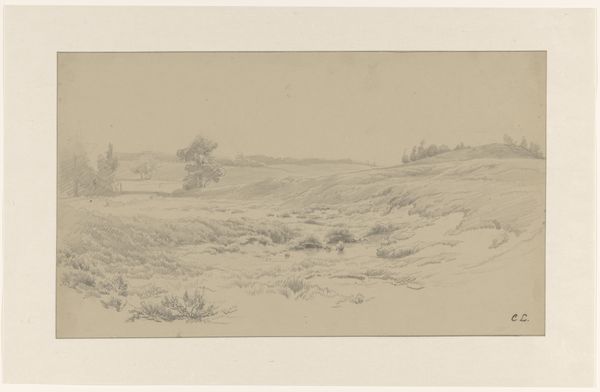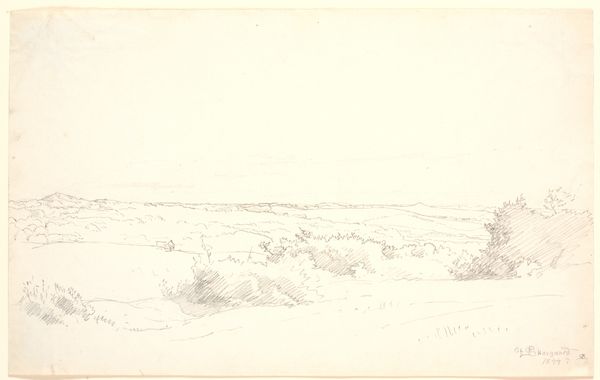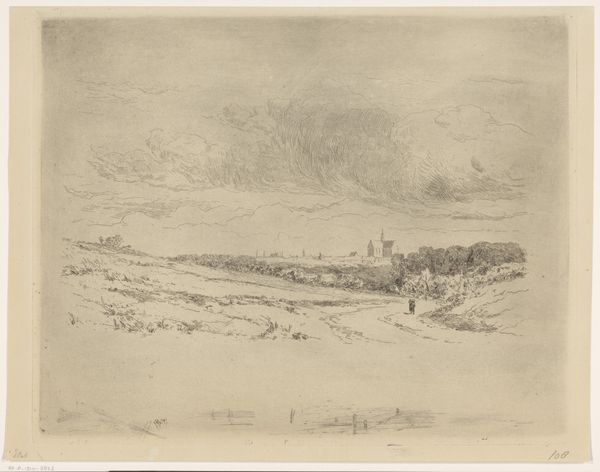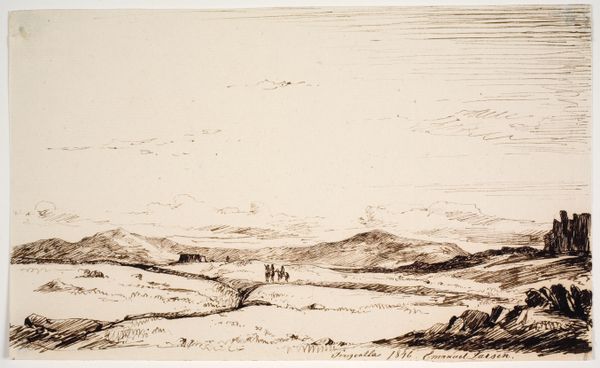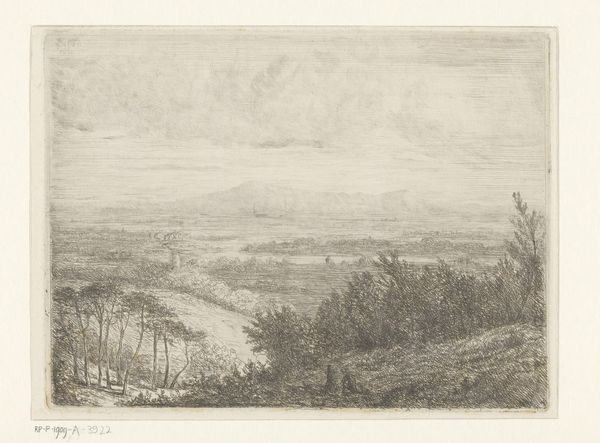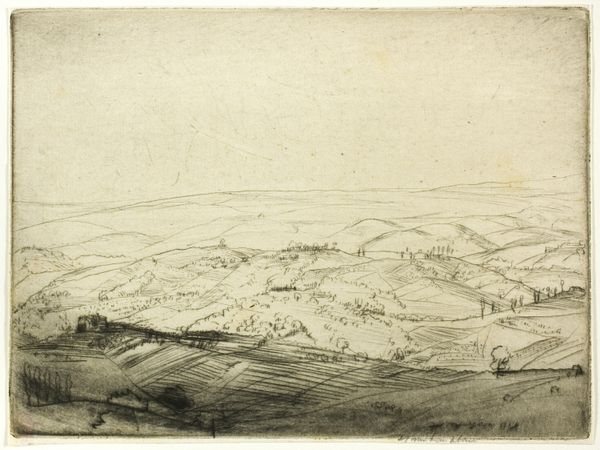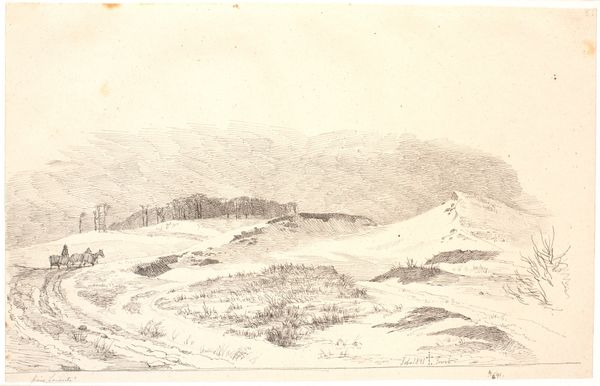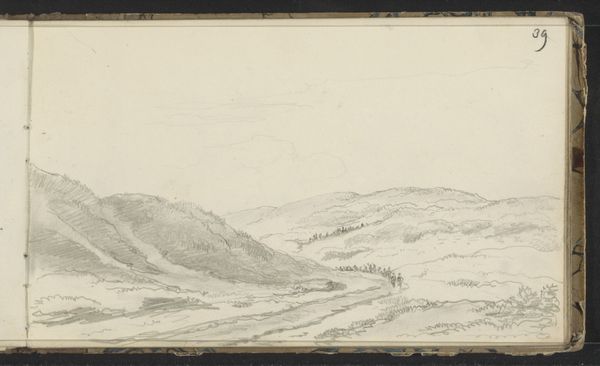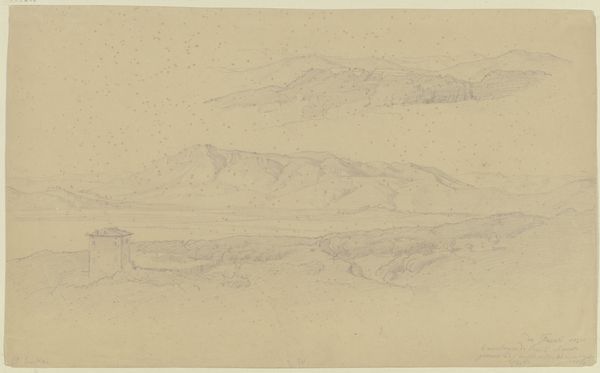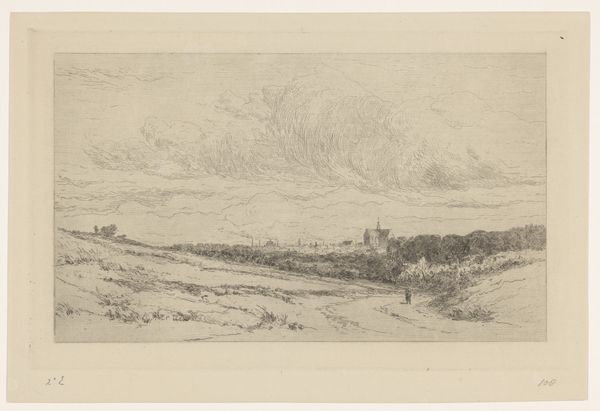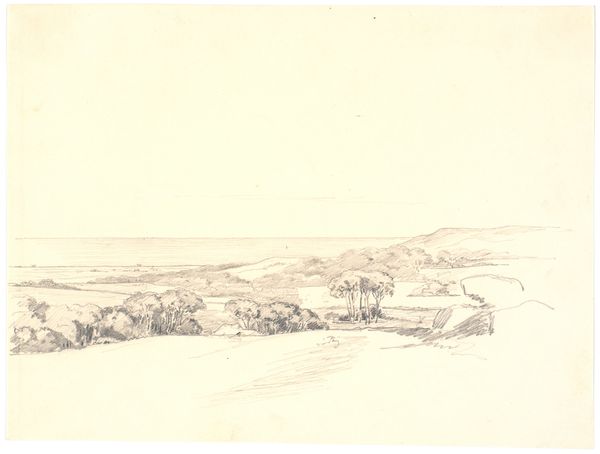
print, etching
# print
#
etching
#
landscape
#
etching
#
realism
Dimensions: height 159 mm, width 230 mm
Copyright: Rijks Museum: Open Domain
Carel Nicolaas Storm van 's-Gravesande made this etching of a dune landscape near Zandvoort. The image is created through a printmaking process called etching, where the artist would have coated a metal plate with a waxy, acid-resistant substance, and then scratched an image into it. The plate is then submerged in acid, which bites into the exposed metal, creating recessed lines. Ink is applied to the plate, filling the etched lines, and then the surface is wiped clean. Finally, the plate is pressed onto paper, transferring the ink and creating the print we see here. Etching is a relatively democratic medium, because it allowed for the creation of multiple originals. This opened art to a wider audience. The fine lines of the etching capture the soft textures of the dunes and the subtle gradations of light in the sky. The landscape is sparsely populated, with a lone figure walking in the distance, emphasizing the vastness and solitude of the scene. It's important to consider not only the final image, but also the labor and skill involved in the etching process, which bridges the gap between fine art and craft.
Comments
No comments
Be the first to comment and join the conversation on the ultimate creative platform.
